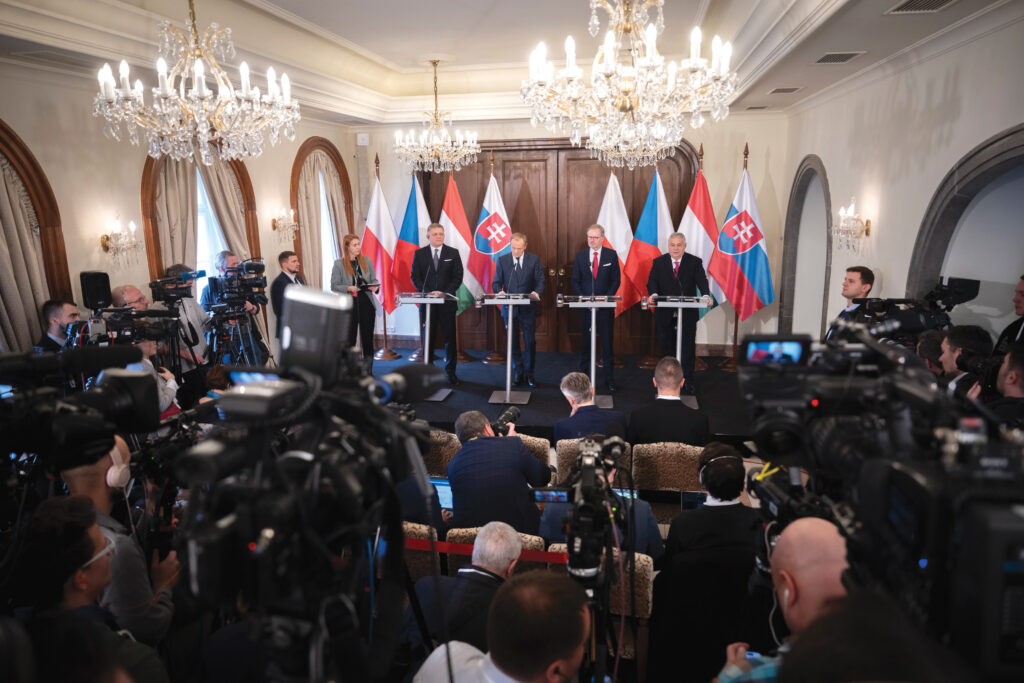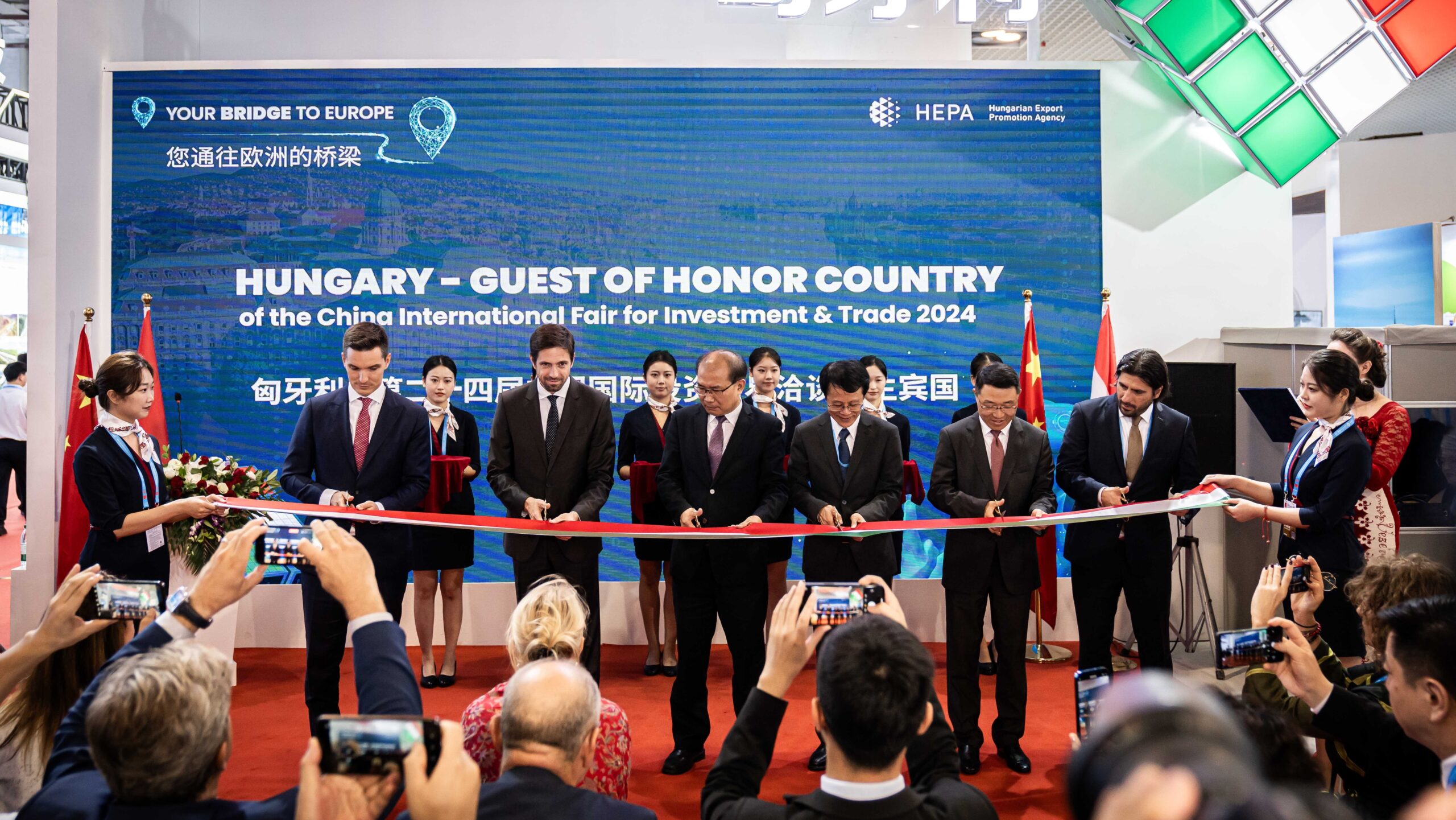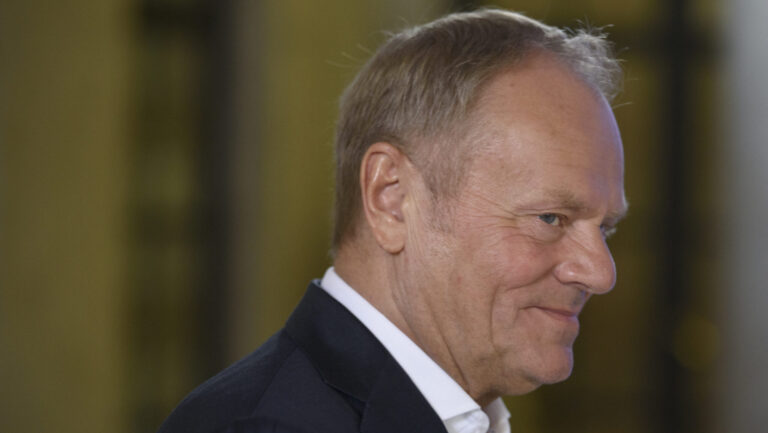This article was originally published in Vol. 4 No. 4 of our print edition.
During an era in which global power is increasingly fragmented and geopolitical certainties have eroded, small- and medium-sized states like Hungary face critical questions about their place in the world. How should a country respond to a multipolar system in which established powers like the United States remain dominant but rising actors like China challenge the status quo? How has the Ukraine and Russia war changed the European balance of power?
The connectivity strategy outlined in Balázs Orbán’s Hussar Cut: The Hungarian Strategy for Connectivity offers one of the most intriguing answers to these questions.1 It positions itself as a flexible, multi-vector approach to foreign policy that seeks to avoid the pitfalls of geopolitical bloc dependency. In an age of rising nationalism, global supply chain disruptions, and shifting alliances, Hungary’s strategy provides a compelling case study for how smaller states can navigate a changing international system.
This paper examines this strategy. First, it unpacks the concept of connectivity, exploring Hungary’s critique of American-led unipolarity and its vision for a multi-vector foreign policy. Second, it analyses the role of resilience as a core operational principle, focusing on how Hungary seeks to balance economic, cultural, and security interests between multiple global powers. Third, it critically assesses the limitations of Hungary’s strategy, particularly in overestimating the capacity of a China-centric axis to rival Western hegemony. Finally, the paper explores the shifting balance of power in Europe post-Ukraine, and how Hungary can capitalize on these changes to strengthen its position as a keystone state.
My key argument is that while the international system is increasingly composed of rising powers, this form of multipolarity is, in fact, ‘shallow’ and rests on structural forces, including demography, finance, and hard power, that remain in profound flux. Ultimately, this paper argues that while Hungary’s connectivity strategy is a rational response to the complexities of a shallow multipolar world, it faces risks—particularly in hedging between competing powers—and may need to recalibrate its vision in light of what I argue will likely be the persistent dominance of the United States, the growing structural weaknesses of other emerging powers like China, and what I believe will be long-term shifts in the European balance of power away from a German-centred EU towards other powers, most notably France, the UK, and Eastern and Scandinavian powers. If played right, this shift will increase Hungarian connectivity. My aim in this paper is to contribute to this ongoing dialogue, map critical trends, and explore how smaller states can craft foreign policies that are both resilient and adaptive in an unpredictable global order.
What Is Connectivity?
Drawing on academic concepts from geopolitics, history, and international relations, the connectivity grand strategy seeks to structure Hungary’s politics to respond flexibly to a rapidly changing global system. It is multilayered and rests on specific assumptions, which we will unpack.
First and most importantly, the strategy argues that polarity is one of the most critical structural forces in international politics shaping states’ foreign relations. Orbán argues that there have been profound shifts in polarity since the Second World War. For example, during the Cold War, the international system worked under the organizing principle of bipolarity between the two superpowers, the USA and the USSR. In the early post-Cold War period, the international system entered an American-centric, unipolar moment that allowed the US to reorder the global system. The so-called ‘Washington Consensus’ sought to drive through multiple neoliberal, market-based reforms, especially in the former Soviet sphere of influence. Militarily, the US expanded its security alliances, most notably under the auspices of NATO. Normatively, the US promoted and often imposed various forms of global moral reordering on other states that reflected its domestic values.
For instance, in the early post-Cold War period, it emphasized democracy and globalization. In contrast, today, under Biden, there are more LGBTQ+ and other Woke norms. In short, the US ‘liberal world order’ was an informal American empire with economic, security, and normative components. Under its strategic aegis in post-Cold War Europe, its principal goal was to contain the threat of Russian territorial expansionism, maintain its strategic preponderance, and continue to underwrite the institutional conditions necessary to constitutionalize European states under American hegemony.
‘Hungary could focus on areas in which mutual interests align, such as defence policy and energy security’
Orbán is critical of this unipolar legacy in several areas. For example, he argues that the American legacy of imposed neoliberalism, characterized by minimal state intervention, deregulation, and a focus on market-driven globalization, has often left political economies and cultures deracinated. He argues that the 2008 financial crisis is the critical event that exposed the weaknesses of neoliberalism and, therefore, the dominant American model of economic organization. The crisis revealed that the lack of meaningful state regulation allowed unchecked risks, leading to financial instability.
In contrast, he argues that more strategic state-orientated economies, such as China, weathered the crisis better due to more robust state control. As such, the state’s role within the national economy is significant in the connectivity strategy. For Orbán, whilst the US will remain crucial, the ‘centre of the global economy is shifting eastwards, and as a result, China’s international political importance will increase’.2 Crucially for the connectivity strategy, the international system has entered a more mature multipolar phase, with various other powers, all of which Hungary should seek to connect with. The opportunity and leverage this affords smaller non-hegemonic states form the fundamental geopolitical backdrop of Hungary’s connectivity strategy.
Second, implicit within the connectivity strategy is a cultural critique of neoliberal political economy, which speaks to deeper philosophical tensions within conservative thought between the importance of freedom and capitalism versus the often destructive capacity of free markets on sovereignty and national cultures. When these forces are married to a crusading liberal internationalism, not only is political sovereignty placed under threat, but so is cultural sovereignty. In resolving this tension, Orbán’s connectivity strategy comes down firmly on the side of a more nationally conservative view of the world: markets and capitalism are good but must be tempered by a more activist state seen as a critical node of social cohesion and national strategy. This also strikes what we might call an anti-imperialist position, at least in the cultural realm. The nation and its people are not simply interchangeable variables on an open-border GDP flowchart. Culture, history, and national identity matter and must be preserved by the state and civil society. It is up to the national community to decide and defend their culture, especially from what is seen as the overreach of the crusading ideology of liberal internationalism seeking to create a uniform world of American ‘mini-mes’.
Third, based on the above reading of changes in the world order, the connectivity strategy seeks to avoid being trapped in trade or geopolitical or economic ‘blocs’ that may emerge as great powers respond to more profound economic or geopolitical rivalry. These blocs pose risks to smaller countries through peripheralization (being assigned a place at the margins) or economic dependency that smaller countries often face within larger structures determined by the great powers. Orbán argues that a bloc-based global economy, evidenced through greater trade protectionism, is increasingly inadequate in a multipolar world, as it constrains national sovereignty and the flexibility needed to respond to global economic changes and opportunities emergent from a more economically multipolar system.
In short, the grand strategy of connectivity argues for a multi-vector approach to international relations, by which Hungary should engage with a diverse range of global partners rather than aligning strictly with a single bloc, be that NATO, the EU, or indeed developing non-Western blocs, perhaps led by China. In essence, Hungary’s connectivity strategy seeks to replace the rigidities of bloc membership with a more flexible and sovereign approach to global engagement, where smaller powers can capitalize on geopolitical diversity and diplomatic flexibility.
Resilience as a Strategic Imperative in Hungary’s Connectivity Approach
If connectivity is the Hungarian state’s ‘grand strategy’, resilience is the operational concept that interfaces between the international, domestic, and policy levels to ensure iterative optimization of that grand strategy. At the strategic endpoint, Hungary aspires to safeguard its national sovereignty, ensure sustainable economic development, and maintain cultural integrity. As noted, these overarching goals are pursued in a world marked by geopolitical shifts, financial uncertainties, and cultural challenges. Orbán argues that resilience directly supports these ends in several ways.
First, Hungary’s economic resilience can be strengthened by expanding its network of international partnerships beyond traditional trade blocs, thereby reducing its dependency on any single economic entity. This approach mitigates the risks associated with global economic downturns, trade disruptions, or diplomatic tensions, ensuring that Hungary can maintain continuous access to markets, investments, and cutting-edge technologies. Economic resilience is vital to Hungary’s ability to withstand and recover from global shocks.
Second, the internal capacity building that resilience demands is equally important. Hungary’s investment in domestic industries, education, and innovation fosters economic growth and creates a self-reliant economy that can function independently of global supply chain vulnerabilities. By strengthening key sectors like technology, renewable energy, and advanced manufacturing, Hungary enhances its ability to respond autonomously to external challenges. This internal resilience is crucial for maintaining national sovereignty and reducing the nation’s susceptibility to external economic pressures. As Orbán argues, ‘resilience means not uncritically celebrating the momentary benefits of interdependencies, but at the same time not unthinkingly foregoing these benefits in response to the risks associated with them’.3
Third, cultural preservation also significantly influences Hungary‘s resilience strategy. During an era in which globalization often exerts homogenizing pressures on national identities, Hungary’s commitment to upholding its Judeo-Christian heritage and cultural values is a bulwark against cultural erosion. This form of national conservative ‘soft power’ ensures that Hungarian civil society can remain cohesive and rooted in its historical and civilizational identity while building wider international networks: a national conservative internationalism as opposed to a liberal internationalist supranationalism. It starts from the inside out rather than being imposed by supranational bodies. To the extent that the national interest is emergent from a deeper national identity (how can you know what you want before you know who you are?) this conservative ‘soft power’ strategy and its embedding within wider domestic and international networks is arguably one of the most important long-term investments the Hungarian state is making in building a more profound political and cultural soft-power ‘hinterland’.
All of the above gives Hungary the potential to occupy the role of what Orbán calls a ‘keystone state’. These states are located on ‘regional geopolitical fault lines’, enabling them to leverage their position to ‘mediate between opposing forces’.4 Hungary can increase its leverage and role as a mediator in regional and global affairs by acting as a bridge between the EU and non-EU powers like Russia and China.
Given that resilience is best built through a constant, iterative strategic appraisal of critical events, interests, and developments in international relations, I want to turn here to a sympathetic appraisal of some of the underlying assumptions of the connectivity strategy as part of an ongoing dialogue to help build resilience.
Specifically, the connectivity strategy currently needs to overestimate the extent to which we are in a multipolar system, and especially the longer-term capacity of a China-centred axis to form a non-Western hegemonic bloc with which Hungary can act as a keystone interlocutor. At its heart, connectivity is a hedging strategy. That is an entirely rational choice. However, it does entail risks, most notably the potential alienation of critical allies or overestimation of options available to states that seek to remain keystone arbiters. In a genuinely multipolar international system, these risks can be mitigated through hedging between great powers. However, I argue that we are not in a state of deep but rather of shallow multipolarity, which can present risks to Hungarian hedging.
Deep or Shallow Multipolarity?
As Hungary navigates its foreign policy and economic strategies in an increasingly complex global environment, there is a compelling need to carefully assess the shifting international power balance. The emergence of a multipolar world, in which influence is distributed among multiple significant powers rather than dominated by a single hegemon, is widely acknowledged. However, while it is true that the global order is becoming less unipolar, with the United States no longer the unchallenged hegemon it once was, Hungary must be cautious about overestimating the scale and implications of this shift—particularly regarding China’s potential to lead a new global order. First, China is often seen as the leading contender to challenge US dominance and potentially spearhead a new multipolar world order. However, while Chinese development is welcomed, China faces significant demographic and economic challenges that may severely limit its capacity to assume such a role.
Demographically, China is on the brink of a profound crisis. The country’s population, which stood at 1.426 billion in 2022, is projected to decline to 1.313 billion by 2050 and could fall below 800 million by 2100. This demographic decline is driven by persistently low fertility rates—1.18 children per woman in 2022, far below the replacement rate of 2.1—and an ageing population. By 2035, over 30 per cent of China’s population will be 60 or older, placing enormous strain on the country’s social and economic systems.5 The old-age dependency ratio, projected to reach nearly 52 per cent by mid-century, will significantly reduce the available workforce and increase the burden on younger generations.
Additionally, China’s skewed sex ratio, with 30 million more men than women, poses risks of social instability that could further complicate its domestic situation. The UN concludes that by 2100, even on its low variant projection, ‘there will be more Chinese people outside the working-age population than in it—a dependency ratio of 101.1’. In contrast, the UN concluded that the US population of 337 million in 2021 is expected to grow to 394 million by 2100.6
Second, China’s economic prospects are similarly constrained. The country is experiencing decelerating industrial production and weak investment growth, with private fixed asset investment growing by just 0.1 per cent year-on-year in early 2024. Despite government interventions, the ongoing shrinkage of the property sector reflects more profound structural weaknesses in the economy. Moreover, consumer demand remains fragile, as evidenced by retail sales growth relying heavily on promotions rather than genuine economic confidence. China’s over-reliance on exports, which grew by 7.6 per cent year-on-year in May 2024, is insufficient to drive overall economic growth, particularly as global trade protectionism rises.7
‘By maintaining a flexible and multi-vector foreign policy, Hungary can remain a keystone state, mediating between various global powers’
Perhaps more worrying for China is that foreign direct investment (FDI) has plummeted, with 2023 seeing an 82-per-cent drop in FDI to USD 33 billion, the lowest level since 1993. This decline in foreign investment highlights growing concerns about China’s economic stability and long-term growth prospects. The demographic situation also feeds into this ‘doom loop’, with lower consumption and higher dependency weakening China’s manufacturing capacity. Given the possibility of conflict in East Asia and the ongoing preparations for this scenario by global business (as reflected in deep declines in FDI), coupled with greater protectionism in the West, it is unlikely that these economic trends will reverse.8
Third, in addition to demographic and economic hurdles, China faces significant challenges in the military and political realms. The Chinese leadership has undergone extensive purges within the political and military systems, destabilizing the Chinese government and raising concerns about governance.9 The purges, which have targeted high-ranking officials within the military, including those in the Rocket Force, have exposed severe corruption and undermined China’s military modernization efforts. Reports of non-functional missile silos and other technological deficiencies suggest that whilst China’s military capabilities are powerful, they are perhaps not as advanced as they might appear, particularly when compared to the United States. Compounding this is the fact that the US has fought many wars in the post-war era and, as such, has had the opportunity to test much of its equipment, operational plans, and other critical elements of national power. To borrow a phrase from Mike Tyson, ‘Everyone has a plan till they get punched in the mouth’. The US has been punched and has also punched many times and subsequently has many plans; China has not been ‘bloodied’ in the same way.
Furthermore, since assuming power in 2012, Xi Jinping’s purges have removed millions of officials, from top-ranked Communist Party ‘tigers’ down to lowly bureaucratic ‘flies’, to use Xi’s evocative terminology. However, what is most striking is that many of these officials ‘being neutralized are not members of hostile political factions but loyalists from the inner ring of Xi’s own clique, leading to serious questions over the regime’s stability’.10 Aside from the danger of regime longevity, there is also the potential for low information political and strategic ‘echo chambers’ at the top of the CCP. If the leadership is simply surrounded by cowed ‘yes men’, it is possible for a false picture to emerge and strategic decision-making to become bottlenecked and sub-optimal.
The US maintains a significant edge in military technology and operational capabilities, including advanced Command, Control, Communications, Computers, Intelligence, Surveillance, and Reconnaissance (C4ISR) systems.11 The US military’s ability to project power globally is supported by a robust logistics infrastructure and a network of alliances, which China lacks. China poses a significant military threat in East Asia, but these factors limit China’s ability to challenge US military dominance and to assert itself as a global hegemon.
Fourth, another critical factor in maintaining US dominance in a multipolar world is the continued strength of the US dollar. Despite diversification efforts by various countries, the dollar remains the world’s primary reserve currency, accounting for 58 per cent of global reserves in 2023. While the share of the dollar in international reserves has declined from its peak, this decline has been gradual and stable, with no signs of an accelerating shift away from the dollar.12 Non-traditional currencies like the Chinese renminbi have gained some ground but still represent a small fraction of global reserves, with significant barriers to broader adoption. The dollar’s dominance is underpinned by the relative stability of the US economy, its deep financial markets, and the global trust in US institutions. These factors ensure that, despite the rise of other currencies, the dollar will likely continue to play a central role in the global financial system, reinforcing US economic hegemony.13
Given these considerations, Hungary must be cautious about overestimating the trends toward multipolarity, particularly regarding China’s role as a potential counter-hegemon around which a new axis can be built in this emerging order. While the world is becoming less unipolar, with more significant roles for other global powers, the United States remains well positioned to maintain its hegemonic status. China’s demographic decline, economic challenges, and internal instability limit its potential to become the dominant global power. This is what I define as shallow multipolarity.
As such, and from a realist perspective, while connectivity remains strategically rational, Hungary must maintain its resilience through constant strategic assessment of events, interests, and the balance of power. Arguably, as it hedges, it should nimbly avoid investing too heavily in a vision of a post-American world order. However, whilst I have analyzed the shallow nature of global multipolarity, it is here that I would now like to consider changes in the balance of power in Europe and how Hungary’s keystone role can capitalize on these shifts.
The EU and Shifts After Ukraine
Whilst global multipolarity is shallow, the Ukraine crisis has brought to sharp relief significant changes in the balance of power within Europe, which will likely heavily influence the connectivity strategy and opportunities in the future. The most significant development in the politics of Europe is the weakening of Germany’s EU leadership and economic power. The raison d’être of closer European integration, first in the EEC and then in the EU, was primarily intended to deal with the ‘German problem’: containing Germany’s natural economic hegemony to dissipate its propensity for military domination. The strategy was one of pan-European constitutionalizing: Germany would bankroll European integration, in return for which it would set the broad prerogatives and interests of its institutional superstructure.14 Germany’s support for the Single Market, the Schengen Agreement, and later the creation of the eurozone were all part of this strategy. By pushing for these initiatives, Germany ensured that its economic strength was embedded within a broader European framework, thereby sending reassuring signals to its neighbours and solidifying its influence over European affairs. This form of German dominance, linked to its economic hegemony, is now experiencing structural problems similar to China’s. This will, in turn, shift the centre of gravity in Europe, with implications for Hungary’s connectivity strategy.

First, Germany faces substantial demographic challenges, including a rapidly ageing population and a declining birth rate. Germany’s fertility rate was 1.46 in 2022, which is in line with the EU average but well below the replacement level of 2.1. However, the fertility rate is lower among women with German citizenship, at 1.36, than for foreign residents, at 1.88. A 2024 study produced by the German Council of Economic Experts that advises the government concluded that these demographic trends would mean Germany’s economy would decline from average annual growth rates of 1.4 per cent in the previous decade to only 0.4 per cent in the current decade.15 Germany would have to attract 400,000 immigrants annually to prevent this labour force decline. The Financial Times warns that this trend will be exacerbated by the oncoming mass retirement of German ‘baby boomers’.16
Second, accompanying Germany’s demographic decline are its energy-intensive industries, particularly manufacturing, which have been hit hard by the energy crisis following the war in Ukraine and the loss of cheap Russian gas. Although energy prices have stabilized somewhat, the country’s overreliance on energy imports has exposed vulnerabilities. Additionally, the push for green technologies has led to challenges in transitioning industries such as steel and chemicals, which are vital to the economy.17 The decline in industrial production, particularly in sectors like automotive manufacturing, highlights a broader structural slump. In short, Germany is at a crossroads and faces substantial economic challenges that threaten its status as Europe’s economic powerhouse.
As Germany’s influence recedes, it is crucial to recognize the potential for other European powers to influence the direction of the EU. With its centralized political system, relatively strong military, and strategic focus on national interests, France is well positioned to take on a more prominent role, particularly in defence and geopolitical strategy. The Ukraine crisis and a likely weakening of American strategic superintendence in European security via NATO means that the EU will become more focused on these issues, with France playing a more prominent role.18 Unlike Germany, France is less dependent on global trade, giving it greater flexibility to manoeuvre in the current geopolitical climate, which is increasingly shaped by security concerns, especially with the ongoing conflict in Ukraine.
In addition to France, the United Kingdom exerts considerable geopolitical and economic influence on the continent. The UK’s solid military capabilities, financial markets, and diplomatic reach make it an essential player in European security, even outside the formal structures of the EU. The UK will likely lean ever more into its defence and security role in Europe, particularly if the US further dials down its NATO presence. Meanwhile, with their stable economies and solid social models, the Scandinavian countries are becoming more influential in shaping EU policies, particularly on climate change, digital innovation, and human rights issues.
Eastern European countries, particularly Poland, are also asserting themselves more within the EU. Poland’s leadership in responding to the Ukrainian crisis and its growing economic and military capabilities have elevated its status within the EU. Poland’s emergence as a leading land power in Europe has been significantly bolstered by its proactive military investments, especially in response to the ongoing Ukraine crisis. Moreover, Poland’s role in NATO’s Enhanced Forward Presence, hosting one of the alliance’s critical multinational battlegroups, further cements its status as a pivotal land power. The combination of these strategic military enhancements and Poland’s active participation in NATO exercises highlights its growing influence and leadership in European security, especially in the face of the ongoing challenges posed by Russia.
The accession of Finland and Sweden to NATO has also significantly altered the strategic landscape, moving the centre of gravity away from Germany. These Scandinavian countries are increasingly pivotal in shaping European defence and geopolitical strategy with their solid military capabilities, strategic geographic positions, and robust commitment to collective security. As security concerns continue to dominate the European agenda, particularly with the ongoing conflict in Ukraine, the strategic focus is increasingly shifting the centre of power away from its traditional heartland of Germany to the north and east of Europe, and this will work in Hungary’s interests.
Finally, both Republican and Democratic administrations have long expressed frustration at what they see as European security free riding on US taxpayers. This perception has not been helped by the historic failure of many European states to even reach the minimum NATO defence-spending target of 2 per cent of GDP. America will likely dial down its commitments, and whoever wins the upcoming US presidential election, the American presence in European security arrangements will probably become much less pronounced.19
Conclusion
Hungary’s grand strategy of connectivity is the right one. It recognizes the value of foreign policy flexibility, the interlocutor role that keystone pivot states can play in areas of geopolitical contestation, and the primacy that identity and culture play in informing national identity and thus also foreign relations.
It has recognized deep tensions in the American-led liberal international order. It has rightly concluded that we are at the end of the ‘end of history’. To the extent that the liberal world order relies on American primacy, it will continue to undergo profound shocks as the global economy becomes more multipolar. In this piece, I have argued that the operational concept of resilience is crucially important, as is the strategic analysis that goes into informing policy and building alliances and relationships to advance Hungarian interests. I have argued that while China’s rise is pronounced, its capacity to act as an organizing axis of international relations will likely become more strained. Moreover, the Ukraine crisis has shifted the geopolitical fulcrum of European power from a moribund Germany towards France, the UK, Scandinavia, and Eastern Europe, especially Poland. This will work in Hungary’s mid-to-long-term interests.
In keeping with the connectivity strategy, Hungary might strengthen its relationships with Scandinavian countries, notably Finland and Sweden, as they emerge as pivotal players in European security following their accession to NATO. This will be complicated somewhat by the tensions between Hungary and Sweden regarding the NATO ascension. Still, beyond personalities, the structural tendencies within European security and broader alliances will create a natural path dependency in the medium term. Hungary could focus on areas in which mutual interests align, such as defence policy and energy security. Hungary could also emphasize its role as a mediator within the EU to maintain strong economic and security ties with these Nordic nations, leveraging its relationship with Russia while ensuring it is not isolated within Europe. Regardless of where Russia and Ukraine end up, Russia will remain a ‘brute fact’ of European security. Like or loathe it, a relationship will have to exist, and to the extent that Hungary can act as an interlocutor in this, it can leverage this role into forms of broader influence.
Moreover, in Eastern Europe, particularly with Poland, Hungary could work on strengthening Visegrad Group relations by identifying and cooperating on shared economic and security challenges. Despite their differences over Russia, Hungary and Poland share concerns about EU overreach. They can find common ground in advocating for more autonomy within the EU, focusing on mutual economic benefits and infrastructure projects that could bolster regional stability.
While maintaining a relationship with China benefits economic diversification, Hungary should avoid becoming overly dependent on this partnership. Instead, Hungary can pursue a more balanced approach by engaging with other Asian economies like Japan or South Korea, which are also key players in global supply chains, offering alternative partnerships to China’s increasingly uncertain future. There are already deep ties in this respect; for example, South Korea and Japan are major East Asian investors in Hungary, particularly in the automotive and battery-production sectors. South Korean firms like SK Innovation and Samsung SDI have invested over EUR 6.2 billion, creating over 20,000 jobs, primarily through EV battery plants. Japan has invested over EUR 1.7 billion, with companies like Suzuki and Bridgestone focusing on automotive manufacturing and electronics. Singapore has a smaller but growing presence in logistics and pharmaceuticals, contributing about EUR 200 million. These investments highlight Hungary’s role as a critical high-tech manufacturing hub in Europe, especially in green energy.20
By maintaining a flexible and multi-vector foreign policy, Hungary can remain a keystone state, mediating between various global powers while safeguarding its economic and strategic interests against the uncertainties of a shifting global order. Hungary’s grand connectivity strategy provides a sophisticated means through which its interests can align with its identity whilst navigating more profound changes in international relations.
NOTES
1 Balázs Orbán, Hussar Cut: The Hungarian Strategy for Connectivity (eBook, MCC Press, 2024).
2 Orbán, Hussar Cut, 61.
3 Orbán, Hussar Cut, 179.
4 Orbán, Hussar Cut, 192.
5 ‘How Severe Are China’s Demographic Challenges?’, China Power (31 January 2024), https://chinapower.csis.org/china-demographics-challenges/.
6 Laura Silver and Christine Huang, ‘Key Facts about China’s Declining Population’, Pew Research Center (5 December 2022), www.pewresearch.org/short-reads/2022/12/05/key-facts-about-chinas-declining-population/.
7 Daniel H. Rosen and Matthew Mingey, ‘China Pathfinder: Q2 2024 Update’, Rhodium Group (7 August 2024), https://rhg.com/research/china-pathfinder-q2-2024-update/.
8 Cheng Leng, ‘Foreign Direct Investment in China Falls to Lowest Level in Decades’, Financial Times (19 February 2024), www.ft.com/content/bcb1d331-5d8e-4cac-811e-eac7d9448486.
9 Katsuji Nakazawa, ‘Analysis: Military Purges Put Xi Jinping’s Singer-Wife in the Spotlight’, Nikkei Asia (11 July 2024), https://asia.nikkei.com/Editor-s-Picks/China-up-close/Analysis-Military-purges-put-Xi-Jinping-s-singer-wife-in-the-spotlight.
10 ‘China’s Xi Goes Full Stalin with Purge’, Politico (6 December 2023), www.politico.eu/article/chinas-paranoid-purge-xi-jinping-li-keqiang-qin-gang-li-shangfu/#:~:text=Since%20his%20reign%20began%20 in,to%%2020use%20Xi%27s%20evocative%20terminology.
11 Yew Lun Tian and Laurie Chen, ‘Chinese Military Purge Exposes Weakness, Could Widen’, Reuters (31 December 2023), www.reuters.com/world/china/sweeping-chinese-military-purge-exposes-weakness-could-widen-2023-12-30/.
12 Serkan Arslanalp, Barry Eichengreen, and Chima Simpson-Bell, ‘Dollar Dominance in the International Reserve System: An Update’, IMF (11 June 2024), www.imf.org/en/Blogs/Articles/2024/06/11/dollar-dominance-in-the-international-reserve-system-an-update.
13 ‘The Future of Reserve Currencies in a Multipolar World’, HSBC (8 July 2024), www.gbm.hsbc.com/en-gb/insights/market-and-regulatory-insights/the-future-of-reserve-currencies-in-a-multipolar-world.
14 Brendan Simms, Europe: The Struggle for Supremacy, from 1453 to the Present (Allen Lane, 2013).
15 Christian Ochsner et al., ‘Demographic Aging and Long-Run Economic Growth in Germany’, German Council of Economic Experts (February 2024), www.sachverstaendigenrat-wirtschaft.de/fileadmin/dateiablage/Arbeitspapiere/Arbeitspapier_02_2024.pdf.
16 Martin Arnold, ‘Births in Germany Fall to Lowest for a Decade’, Financial Times (2 May 2024), www.ft.com/content/401c4ed2-ac6b-46f7-9883-1d63787b6a0f.
17 Ryan Hogg, ‘Germany Set to Permanently Pay for Reliance on Russian Gas—As power chief says “significant structural demand destruction” means it will never fully recover from energy crisis’, Fortune Europe (11 April 2024), https://fortune.com/europe/2024/04/11/germany-pay-reliance-russian-gas-power-chief-significant-structural-demand-destruction-energy-crisis/.
18 ‘War in Ukraine—France Needs to Reassess Its Foreign Policy Options’, Institut Montaigne (8 June 2022), www.institutmontaigne.org/en/expressions/war-ukraine-france-needs-reassess-its-foreign-policy-options.
19 Sumantra Maitra, ‘The Path to a “Dormant NATO”’, The American Conservative (29 December 2023), www.theamericanconservative.com/the-path-to-a-dormant-nato/.
20 ‘Previous All-Time High FDI Inflow Doubled in Hungary’, Hungarian Investment Promotion Agency (2024), https://hipa.hu/news/previous-all-time-high-fdi-inflow-doubled-in-hungary/.
Related articles:








